SAILOR ARITA
GEN EMON KILN OURYOKUSAI KABUTO KARAKUSA ARABESQUE
FOUNTAIN PEN

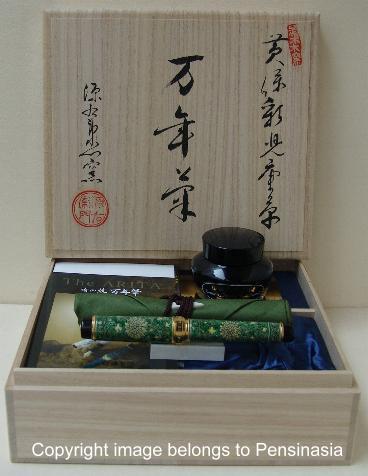
SAILOR ARITA
GEN EMON KILN OURYOKUSAI KABUTO KARAKUSA ARABESQUE
FOUNTAIN PEN
Japanese porcelain was first
produced in the early 17th century in a small town called Arita located
in the Northern part of Kyushu Island, which is the southernmost island
of the four main islands of Japan. Towards the end of the 16th century,
Hideyoshi Toyotomi, the ruler of Japan at that time, sent his army to
invade Korea twice. The feudal Lord Nabeshima, who also participated in
the invasions with his troops, forced a Korean master potter named Ri
Sampei and his potters group to come to Japan. It is generally accepted
that this Lorean potter discovered a large kaolin deposit in Izumiyama
mountain in Arita, and that he successfully produced white porcealin in
Japan for the first time.
In 1648, Nabeshima's feudal clan government placed Arita under its
strict administration in order to protect and promote porcelain
manufacture in Arita, as well as prevent the leakage of the porcelain
making technique to other feuda clans. It also limited porcelain trade
with merchants from other feudal clans to the nearby port town of Imari.
Arita porcelain intended for trade was shipped from Imari port to other
districts of Japan and even to foreign countries through Nagasaki. for
this reason, Arita porcelain produced in the Edo period is now called
"Old Imari".
After 1639, Japan adopted the policy of national isolation. During that
period, Holland and China were the only countries allowed to trade with
Japan. Nagasaki port was the only open window to foreign countries. In
those days, the Dutch East India Company was making enormous profits
importing spices from the East and ceramics from China to Europe.
However, around the middle of the 17th Century, it had become difficult
to trade with China because of disturbances in the last years of the
Ming dynasty. Therefore, the Dutch East India Company ordered a great
amount of porcelain from Arita. From 1653 to the end of the Edo period,
more than two million pieces of Arita porcelain were exported to
southeastern countries and even all the way to Europe through the port
of Nagasaki. European nobility and royalty gorgeously decorated their
rococo style palaces and mansions with "Imari". Imari ware was their
status symbol.
In all ages and countries, regardless of east or west, "Old Imari" has
enriched the lives of many people.
Some 250 years have passed since Gen-emon kiln was established in
Zemeki, Arita. Throughout those long tears, Gen-emon kiln has preserved
the tradition of "Old Imari" by producing beautiful porcelain which has
attracted people of various time to Gen-emon. During its long history,
there have been hard times such as the Meji restoration and World War
II. The wartime was particularly hard because the entire nation was
involved in national defense activities under a controlled economy.
However, Gen-emon kiln was designated as an authorised kiln to produce
artistic porcelain. Under those circumstances, Genemon V devoted himself
to studying industrial ceramic arts, and he succeeded in maintaining the
tradition of Arita porcelain by improving conventional techniques and
designs. Coming through the post-was confusion, Gen-emon VI expanded the
traditional techniques of Gen-emon kiln further by developing and
producing restaurant tableware as well as artistic porcelain. Later, he
shifted his emphasis, as he started producing household tableware. The
wanted to make the beauty of "Old Imari" more available in household
tableware in order to encourage more beautul and creative lifestyles.
Thus he dedicated his life to the restoration of "Old OImari" by seeing
household tableware through new eyes.
The characteristic styles of Gen-emon kiln, which are highly regarded
both in Japan and abroad, can be seem in its present products. One can
see the simple, but free and easy style of Early Imari, plus the
brilliant and dignified style of Exported Imari, which requires skilful
brushwork. In addition, an original Gen-emon style based on the Imari
styles has been established which successfully reflects comtemporary
tastes.
The outstanding feature of Gen-emon kiln is that each product is formed
and painted by hand, utilising the traditional techniques of Arita
porcelain. Because of the difficulty of firing porcelain requires
perfect work in each process, a specialised systematic process was
developed here in Arita.
In porcelain production, it is necessary for individual artisans to do
their best work in their own areas of expertise. Areas of expertise
include throwing, painting, glazing, and firing with everyone giving
great attention to materials. Gen-emon kiln uses unique clay, glaze,
fuel (Japanese red pine), and pigments. Gen-emon kiln porcelain is the
culmination of creativity and effort involving the entire kiln.

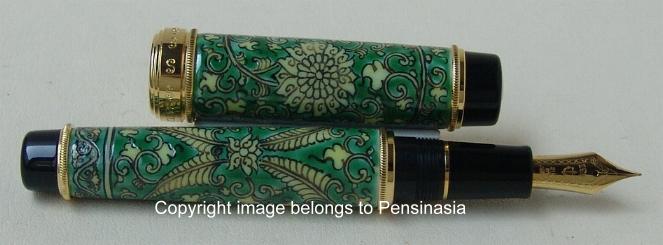
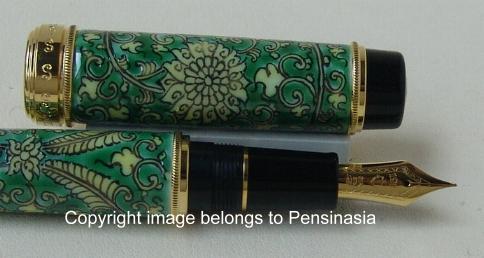


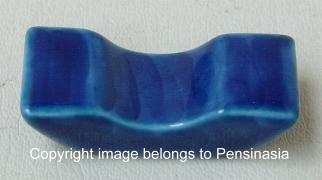
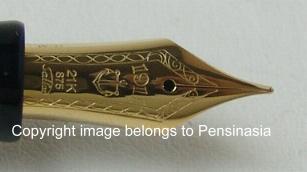
SAILOR ARITA
GEN EMON KILN OURYOKUSAI KABUTO KARAKUSA ARABESQUE
FOUNTAIN PEN
